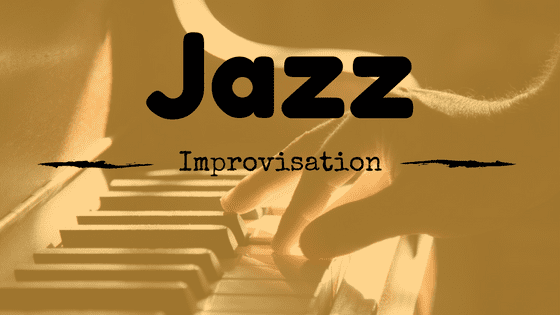
Jazz Improvisation Tutorial For Beginners
Contents

This jazz improvisation tutorial features one of the all-time most requested and recorded jazz standards - "Autumn Leaves" written by Joseph Kosma way back in 1945. The song continues to be a favorite among jazz players and audiences today. In this article we'll take a closer look at the chords of the 'A' section and explain how to think about improvising over them.
Jazz Improvisation Tutorial - Breaking Down the Chords
Let's say you're working on soloing over the 'A' section of Autumn Leaves (the first 8 measures, which repeat). At first glance it looks like a lot of chords, right? One chord per measure, so every four beats you encounter a new chord.

Some players (and teachers, and books, and jazz theory classes, etc), look at these chords as requiring a new chord scale for each new chord (a "chord scale" is a scale that corresponds to a particular chord, making it a great scale to choose when improvising over that chord). So you might get a very dense and confusing answer like this:
"For Am7 you can solo using an A dorian chord scale, for D7 a D mixolydian scale, for G major a G ionian scale, for C major a C lydian scale, for F#m7b5 an F# locrian scale, for B7 an E harmonic minor scale starting on B, and for Em an E aeolian scale."
WOW! That's a mouthful to say AND to write. The chord scales mentioned above (referred to as "modes") are accurate, and in the hands of a good player will sound really good when used for soloing. But, there is an easier an to break these chords down.
Jazz Improvisation Tutorial - An Easier Approach
Let's remember that almost ALL of these chords are found in the key of G major. These chords (below) are referred to as diatonic chords because they are all found in the key of G major.

Why is this important? Because if these chords are all built by using only the notes from G major, then we can solo over ALL of them using just one scale - G MAJOR! Why try to remember 7 different chords scales and their names when all 7 of those scales are simply a G major scale that starts on a different note? For example, A dorian is just a G major scale starting on A. And an F# locrian scale is just a G major scale starting on F#.
Jazz Improvisation Tutorial - One "Outlier" Chord
There is one chord in the progression (B7) for which a G major scale is not the best choice when improvising. Why? Because a crucial note in a B7 chord is the D# (the 3rd of the chord) and D3 is not found in a G major scale. We need to make sure we have a scale to play that includes the D# when soloing over B7. We can simply play a G major scale with a raised 5th, which is the same as an E harmonic minor scale. That's it, just change that one note and now we have a scale that "works" over B7.

THis tutorial has both 14 day and 60 day trial invitations, one in the Before You Go and the other at the top of the page. If 14 days is the current option you need to get this sorted to stop confusion.
It has been fixed!